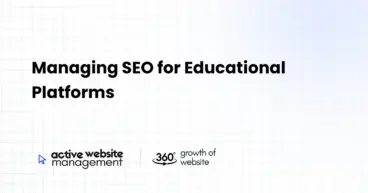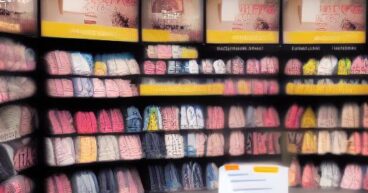January 8, 2025
13 min read
Why SEO Matters for Your Fashion Brand Online
Let’s be honest, the online fashion world is a crowded runway. To get your brand noticed amidst a sea of stylish competitors, you need more than just stunning designs and amazing photography. You need a solid Search Engine Optimization (SEO) strategy. Why? Because SEO is the secret sauce that helps people find you when they’re actively searching for what you offer. Think of it as your digital stylist, ensuring your brand is the one that catches the eye.
The Power of Organic Search for Fashion
Organic search results – those that appear naturally on Google, Bing, and other search engines – are driven by SEO. Unlike paid advertising, organic traffic is often seen as more credible. When a potential customer finds your fashion website through an organic search result, it implies that your site is relevant and authoritative. This builds trust and can lead to higher conversion rates (turning visitors into loyal customers).
Reaching the Right Audience, at the Right Time
SEO isn’t just about getting any traffic; it’s about attracting the right traffic. When a user types “vintage floral dress size 10” into Google, they’re telling you exactly what they want. Good SEO ensures your website shows up for these specific searches, connecting you with people actively looking to buy what you sell. This targeted approach is far more effective than relying solely on general advertising.
Keyword Research: Unlocking the Language of Fashion Shoppers
Before you dive into optimizing your website, you need to understand the language your customers are using. Keyword research is the process of identifying the terms and phrases potential customers use when searching for fashion products online. Think of it as eavesdropping (in an ethical way, of course!) on your target audience’s needs and desires.
Don’t Just Maintain Your Website—
Grow It using Active Website Management! Don't Wait for Growth—Accelerate It with Active Website Management
Types of Keywords Relevant to Fashion
- Generic Keywords: These are broad terms like “dresses,” “jeans,” or “shoes.” While high in volume, they are also highly competitive. Targeting these alone is often not enough.
- Long-Tail Keywords: These are more specific phrases, like “sustainable cotton summer dress” or “black leather ankle boots size 7.” They are less competitive, and they often attract shoppers with a clearer intent to purchase.
- Branded Keywords: These include your brand name, like “Brand X t-shirt” or “Brand Y swimwear.” These keywords target loyal customers and those already familiar with your brand.
- Location-Based Keywords: If you have a brick and mortar store or want to focus on local clients, keywords like “boutique near me,” or “clothing shop in [city name]” are really important.
How to Find the Right Keywords for Your Fashion Brand
- Brainstorm: Start by thinking like your customer. What would you type into Google to find your products? Jot down all the ideas that come to mind.
- Competitor Analysis: See what keywords your competitors are ranking for. Tools like SEMrush, Ahrefs, or Moz allow you to analyze competitor websites and uncover their keyword strategies.
- Use Keyword Research Tools: Utilize free and paid tools like Google Keyword Planner, Ubersuggest, or Keyword Tool to find keyword volumes, related terms, and their level of competitiveness.
- Consider Intent: Think about why someone is using a specific keyword. Are they looking to buy, research, or browse? Tailor your content to match user intent.
- Combine Keywords: Use long-tail keywords (combinations of two or more words) to target specific niches and customer needs.
Example: Applying Keyword Research
Let’s say you sell handmade, bohemian-style clothing. Instead of just targeting “clothing,” you might aim for long-tail keywords like:
- “Handmade boho maxi dress”
- “Ethical cotton festival top”
- “Unique bohemian jewelry online”
By targeting these specific keywords, you’ll be more likely to attract the right customers and see better results.
On-Page SEO: Making Your Website Search Engine Friendly
Once you’ve done your keyword research, the next step is to make sure your website is optimized. This process, known as on-page SEO, ensures your pages are not just beautiful but also easily understood by search engines.
Optimizing Page Titles and Meta Descriptions
- Page Title: This is the text that appears in the browser tab and on search engine results pages (SERPs). It’s crucial for both users and search engines.
- Best Practice: Include your primary keyword, keep it concise (under 60 characters), and make it compelling. For example: “Bohemian Maxi Dress | Shop Stunning Summer Styles – [Your Brand Name]”.
- Meta Description: This is a brief summary of your page that appears below the title on SERPs. It encourages users to click.
- Best Practice: Use your target keyword naturally, write in active language, keep it under 160 characters, and include a call to action. For example: “Browse our collection of handmade bohemian maxi dresses. Discover unique styles for every summer festival and everyday chic look. Free shipping on all orders!”
Header Tags: Structuring Your Content
- H1 Tag: Each page should have one H1 tag, which is the main heading.
- Best Practice: Use your primary keyword here and ensure it accurately reflects the page’s content.
- H2, H3, H4 Tags: Use these tags to structure your content and create a logical hierarchy.
- Best Practice: Use them to break up text into sub-sections and naturally incorporate relevant keywords.
Image Optimization: Beyond Just Pretty Pictures
- Alt Text: Search engines cannot “see” images like we do. Alt text is a description of the image that search engines can read.
- Best Practice: Use descriptive keywords related to the image and your product. Example: “Close-up of a red silk scarf with intricate floral pattern”.
- File Names: Use descriptive and keyword-rich file names for your images.
- Best Practice: Instead of “IMG123.jpg,” use “red-silk-floral-scarf.jpg.”
- Image Size: Compress your images to reduce file size. Large images slow down page loading, which impacts SEO and user experience.
- Best Practice: Use online tools or plugins to compress images before uploading them to your site.
Optimizing Product Pages: The Heart of Your Ecommerce
- Unique Product Descriptions: Avoid using manufacturer’s descriptions. Craft unique and keyword-rich descriptions that highlight the benefits and features of each product.
- High-Quality Images: Use multiple, high-resolution images from various angles, including detail shots. Consider using videos too.
- Customer Reviews: Customer reviews build trust and also add more keyword-rich content to your pages. Encourage your customers to leave reviews.
- Clear Call to Action: Use strong, action-oriented language. “Add to Cart,” “Buy Now,” “Shop Now” buttons are essential.
- Size Charts: Include detailed and easy-to-understand size charts to reduce returns and improve customer satisfaction.
Internal Linking: Guiding Users (and Search Engines)
- Link Related Content: Add internal links between pages on your website. This helps search engines understand the structure of your site and helps users easily discover more content.
- Use Keyword-Rich Anchor Text: Use descriptive keywords when linking internally. Instead of “click here,” use something like “see our latest collection of summer dresses”.
Don't Wait for Growth—Accelerate It with
Active Website Management Don't Wait for Growth—Accelerate It with Active Website Management
Technical SEO: Ensuring Your Website is in Top Condition
Technical SEO deals with the backend of your website, ensuring search engines can easily crawl, understand, and index your pages. It’s like ensuring your store’s foundation is rock solid so it can withstand traffic.
Website Speed: Fast Loading is Crucial
- Page Load Time: A slow-loading website frustrates users and negatively impacts SEO.
- Best Practice: Use Google’s PageSpeed Insights tool to identify areas for improvement. Optimize images, leverage browser caching, minify CSS and JavaScript, and consider using a content delivery network (CDN).
- Mobile-First Indexing: Google primarily uses the mobile version of your website for indexing.
- Best Practice: Ensure your site is fully responsive and provides a seamless experience on all devices.
Website Architecture: Building a Logical Structure
- Clear Navigation: Make sure your website is easy to navigate for both users and search engines.
- Best Practice: Use a clear menu structure and logical category organization.
- URL Structure: Use keyword-rich and descriptive URLs.
- Best Practice: For example, instead of
yoursite.com/product?id=123, use yoursite.com/dresses/bohemian-maxi-dress.
- Sitemap: Create and submit a sitemap to search engines. This helps them find all your pages.
Secure Website (HTTPS): Building Trust
- HTTPS: Ensure your website uses HTTPS, not HTTP. This is crucial for security and is a ranking factor for search engines.
Crawlability and Indexing: Helping Search Engines Find You
- Robots.txt: This file tells search engines which pages on your website to crawl and index.
- Best Practice: Ensure your robots.txt file is configured correctly and blocks any unnecessary pages from being indexed.
- Noindex Tag: Use
noindex tags on pages you don’t want to be indexed by search engines, like thank you pages or admin areas. - Canonical Tags: Use canonical tags when you have similar content on multiple URLs. This tells search engines which version is the preferred one.
Off-Page SEO: Building Authority and Trust Beyond Your Website
Off-page SEO refers to activities you do outside your website to improve its search engine ranking. This is where you establish your brand as a credible voice in the fashion industry.
Link Building: Earning Trust from Other Websites
- High-Quality Backlinks: Earn backlinks from reputable and relevant websites. This is a signal to search engines that your website is valuable.
- Guest Blogging: Contribute guest posts to fashion blogs and magazines to showcase your expertise and gain backlinks.
- Influencer Collaboration: Partner with fashion influencers to promote your brand and gain links to your site.
- Broken Link Building: Find broken links on other websites and suggest your content as a replacement.
- Be Patient: Link building takes time. It’s about quality over quantity. Don’t engage in black hat tactics like buying backlinks, which can get your site penalized.
Social Media: Extending Your Reach and Brand Awareness
- Active Presence: Be active on social media platforms relevant to your target audience.
- Engage with Your Audience: Respond to comments, messages, and participate in conversations.
- Share Your Content: Share your blog posts, product pages, and other content on social media platforms.
- Use Social Media as a Customer Service Channel: Help customers with their questions and concerns on social media.
Brand Mentions: Increasing Brand Recognition
- Monitor Brand Mentions: Track where your brand is being mentioned online, even if there isn’t a link to your site.
- Engage With Brand Mentions: If you see a positive brand mention, reach out and thank them for their support. If there is a negative brand mention, address it professionally.
Online Reputation Management: Protecting Your Brand
- Monitor Online Reviews: Regularly check online reviews on platforms like Google Reviews and Yelp.
- Respond To Reviews: Respond to both positive and negative reviews in a timely and professional manner.
Content Marketing: The Heart of SEO Success
Content marketing is about creating valuable and engaging content that attracts and retains your target audience. For fashion websites, this often involves creating inspiring and informative content that relates to the fashion industry.
Blog Posts: Sharing Your Expertise
- Fashion Trends: Write about the latest trends, seasonal styles, and timeless classics.
- Style Guides: Create guides to help customers style your products and discover new looks.
- Behind-the-Scenes: Share stories about your brand, your design process, and the people behind the company.
- Customer Spotlights: Feature your customers wearing your products.
- Keyword Rich Content: Integrate relevant keywords naturally into your content.
Lookbooks: Visually Showcasing Your Products
- Inspiring Photography: Showcase your products in visually appealing lookbooks.
- Styling Tips: Provide styling tips and outfit ideas alongside your product images.
Videos: Engaging Your Audience Through Visuals
- Product Demos: Show your products in action with video demos.
- Styling Tutorials: Create video tutorials on how to style your clothing items.
- Behind-the-Scenes Videos: Take your audience on a behind-the-scenes journey to give them a personal connection with your brand.
- Interviews: Interview your designers, employees, or other fashion influencers.
User-Generated Content: Leveraging Your Community
- Encourage Submissions: Encourage your customers to share photos and videos of themselves using your products.
- Run Contests and Giveaways: Engage your audience by creating contests or giveaways where the prize is a feature on your website or social media.
- Repurpose Content: Use your customer generated content for your blog and social media channels.
Local SEO: Reaching Customers in Your Area
If you have a physical store or serve a specific local area, local SEO is essential.
Google My Business: Getting Found on Google Maps
- Claim Your Listing: Claim and verify your Google My Business listing.
- Complete Your Profile: Fill out your profile completely with accurate information, including your business name, address, phone number, hours of operation, and website.
- Upload High-Quality Photos: Add photos of your store, products, and team.
- Encourage Reviews: Ask your happy clients to leave a review on your Google My Business.
- Respond to Reviews: Respond to all reviews, positive and negative.
Local Citations: Getting Listed in Directories
- NAP Consistency: Ensure your name, address, and phone number (NAP) are consistent across all online directories.
- List on Relevant Directories: List your business on local directories like Yelp, Foursquare, and industry-specific directories.
Local Keywords: Targeting Local Searches
- Location-Based Keywords: Include location-based keywords in your content, such as “boutique in [city name]” or “clothing store near me.”
- Local Landing Pages: Create location-specific landing pages for your website.
Active Website Management: Your Partner in SEO Success
Maintaining and improving your fashion website’s SEO is an ongoing process. It requires consistent effort and expertise. That’s where a partner like Active Website Management can be invaluable. They offer comprehensive SEO services tailored to the unique needs of fashion and apparel businesses.
SEO Audits: Identifying Areas for Improvement
- Comprehensive Analysis: Active Website Management will conduct thorough SEO audits to assess your website’s current performance.
- Technical Issues: They identify any technical issues that are affecting your site’s search engine rankings.
- Keyword Gaps: They uncover keyword opportunities to boost your organic visibility.
- Competitor Analysis: They can analyze your competitors and identify ways to improve your own strategy.
On-Page Optimization: Refining Your Content
- Content Optimization: They will help you optimize your existing website content and help you create engaging new content.
- Keyword Implementation: They use the right keywords to target your specific audience.
Off-Page Optimization: Expanding Your Reach
- Link Building: They will implement a link building strategy to increase your site’s authority.
- Social Media Strategy: They can create an social media strategy to help you expand your reach.
Technical SEO Support: Ensuring a Smooth Experience
- Website Speed: They optimize your website’s speed to make sure your site loads quickly.
- Mobile Optimization: They will ensure your website is fully responsive across all devices.
Monthly Reporting: Tracking Your Progress
- Transparent Reports: They provide detailed monthly reports so that you can see your progress.
- Customized Strategies: They tailor SEO strategies based on your website’s individual goals.
Why Choose Active Website Management?
- Expertise: Their team of SEO specialists has a deep understanding of the fashion and apparel industry.
- Customized Solutions: They create personalized SEO strategies that address the unique needs of your business.
- Measurable Results: They focus on delivering measurable results and increased ROI.
- Transparent Communication: They provide ongoing communication and support throughout the process.
- Peace of Mind: By partnering with Active Website Management, you can focus on your core business while they handle the complexities of SEO.
Conclusion: Embracing SEO for Fashion Success
Optimizing your fashion and apparel website for search engines is not a one-time task but rather an ongoing commitment. It’s about understanding your customers, using the right keywords, creating valuable content, and implementing solid technical and off-page strategies. By putting these practices into action and working with a partner like Active Website Management, you can ensure that your brand stands out from the competition and attracts the right customers, driving the growth and success of your fashion business. The key is to always be adapting, testing, and refining your approach to stay ahead of the curve. Remember, in the fast-paced world of fashion, consistent and effective SEO is the ultimate style statement.







